
Exploring Morocco’s UNESCO World Heritage Sites
Morocco is a country steeped in history, culture, and architectural beauty, and nowhere is this more evident than in its UNESCO World Heritage Sites. These sites, scattered across the country, represent Morocco’s rich heritage, blending ancient civilizations, Islamic traditions, and French influences. From ancient medinas to desert fortresses, exploring these landmarks is like stepping back in time and discovering the many layers of Moroccan culture.
Here’s a detailed guide to Morocco’s most famous UNESCO World Heritage Sites, offering both historical insights and travel tips for those planning to visit.
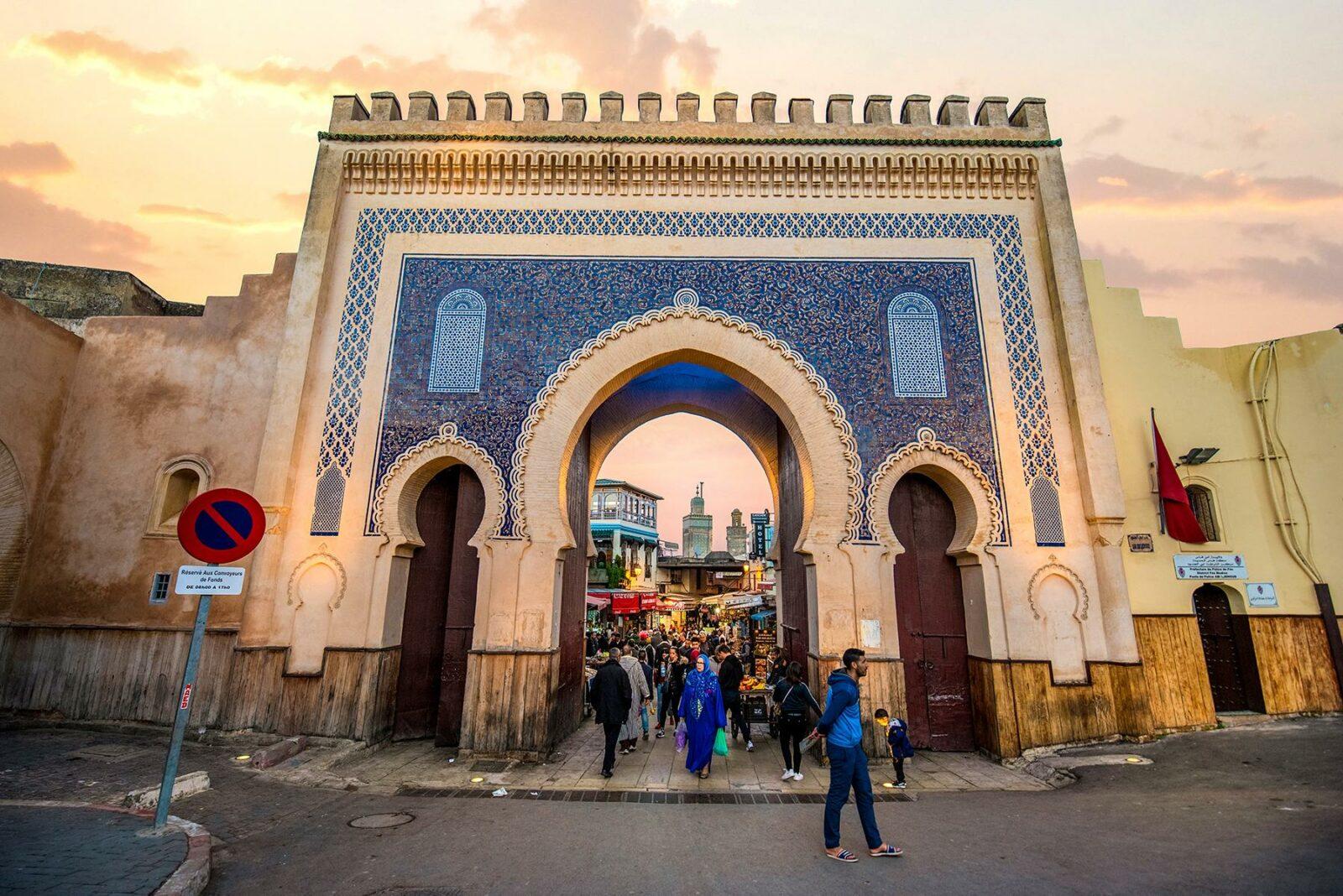
Medina of Fez (Inscribed in 1981)
The Medina of Fez, or Fez el-Bali, is the oldest and largest medieval city in the world. Founded in the 9th century, Fez served as Morocco’s capital for centuries and remains the spiritual and cultural heart of the country. The medina is a sprawling maze of narrow streets, traditional souks, stunning mosques, and madrasas (Islamic schools).
- Highlights:
-
- Al-Qarawiyyin University: The world’s oldest continually operating university.
- Bou Inania Madrasa: A masterpiece of Islamic architecture with intricate stucco and wood carvings.
- Tanneries of Fez: Famous for leather-making, visitors can watch the traditional tanning process in action.
-
- Travel Tip: Prepare to get lost in the winding streets! Hiring a local guide is highly recommended to help navigate the medina’s intricate alleyways and discover hidden gems.

Medina of Marrakech (Inscribed in 1985)
The bustling Medina of Marrakech is a vibrant mix of old-world charm and modern-day energy. Founded in the 11th century by the Almoravid dynasty, the city became an important political, economic, and cultural center. The medina’s red sandstone walls, which give Marrakech its nickname, the “Red City,” enclose a stunning collection of palaces, mosques, and bustling souks.
- Highlights:
- Jamaa El-Fna Square: The lively heart of the medina, where performers, vendors, and snake charmers entertain visitors day and night.
- Koutoubia Mosque: A striking landmark with a minaret visible from all over Marrakech.
- Bahia Palace and Saadian Tombs: Architectural wonders showcasing Moroccan craftsmanship.
- Travel Tip: Visit Jamaa El-Fna in the late afternoon to watch it transform into a vibrant nighttime spectacle, with food stalls and live entertainment.
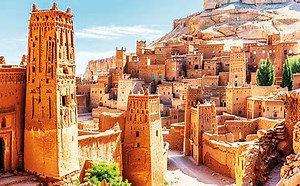
Ait Ben Haddou (Inscribed in 1987)
Ait Ben Haddou is one of Morocco’s most iconic landmarks, often recognized as the backdrop for many famous films and TV shows, including Gladiator and Game of Thrones. This ksar (fortified village) is located on the ancient caravan route between the Sahara Desert and Marrakech. Its striking earthen clay architecture is an outstanding example of traditional Moroccan earthen construction.
- Highlights:
-
- Exploring the Ksar: Wander through the narrow alleys of this ancient village, with its mud-brick homes and fortifications.
- Views of the Atlas Mountains: Climb to the top of the ksar for stunning panoramic views of the surrounding desert and mountains.
-
- Travel Tip: Ait Ben Haddou is located near Ouarzazate, a city known for its film studios and desert landscapes. It’s a perfect stop on a road trip to the Sahara Desert.
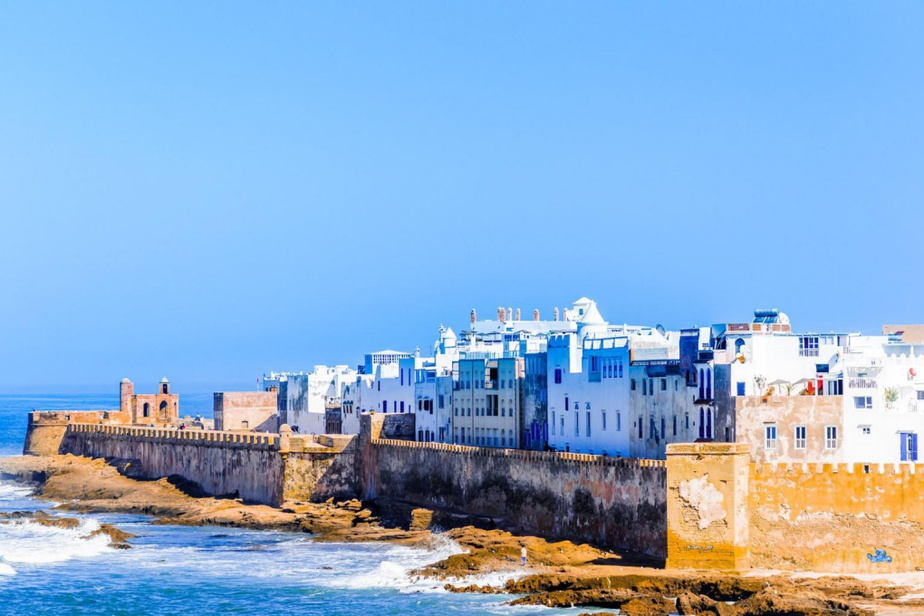
Medina of Essaouira (Inscribed in 2001)
The coastal city of Essaouira is a unique blend of Moroccan and European architectural styles, thanks to its Portuguese, French, and Berber influences. Known for its laid-back atmosphere and stunning Atlantic coastline, Essaouira’s medina is famous for its whitewashed houses, blue shutters, and beautiful ramparts that overlook the sea.
- Highlights:
-
- Skala de la Ville: Walk along the fortress walls with their historic cannons and breathtaking ocean views.
- Essaouira Souks: Explore the artisanal markets known for local crafts such as woodwork, jewelry, and textiles.
- Beach and Water Sports: Essaouira is a popular destination for windsurfing and kitesurfing, thanks to its strong coastal winds.
-
- Travel Tip: Essaouira’s medina is smaller and less chaotic than Marrakech or Fez, making it a great destination for a relaxed, coastal getaway.
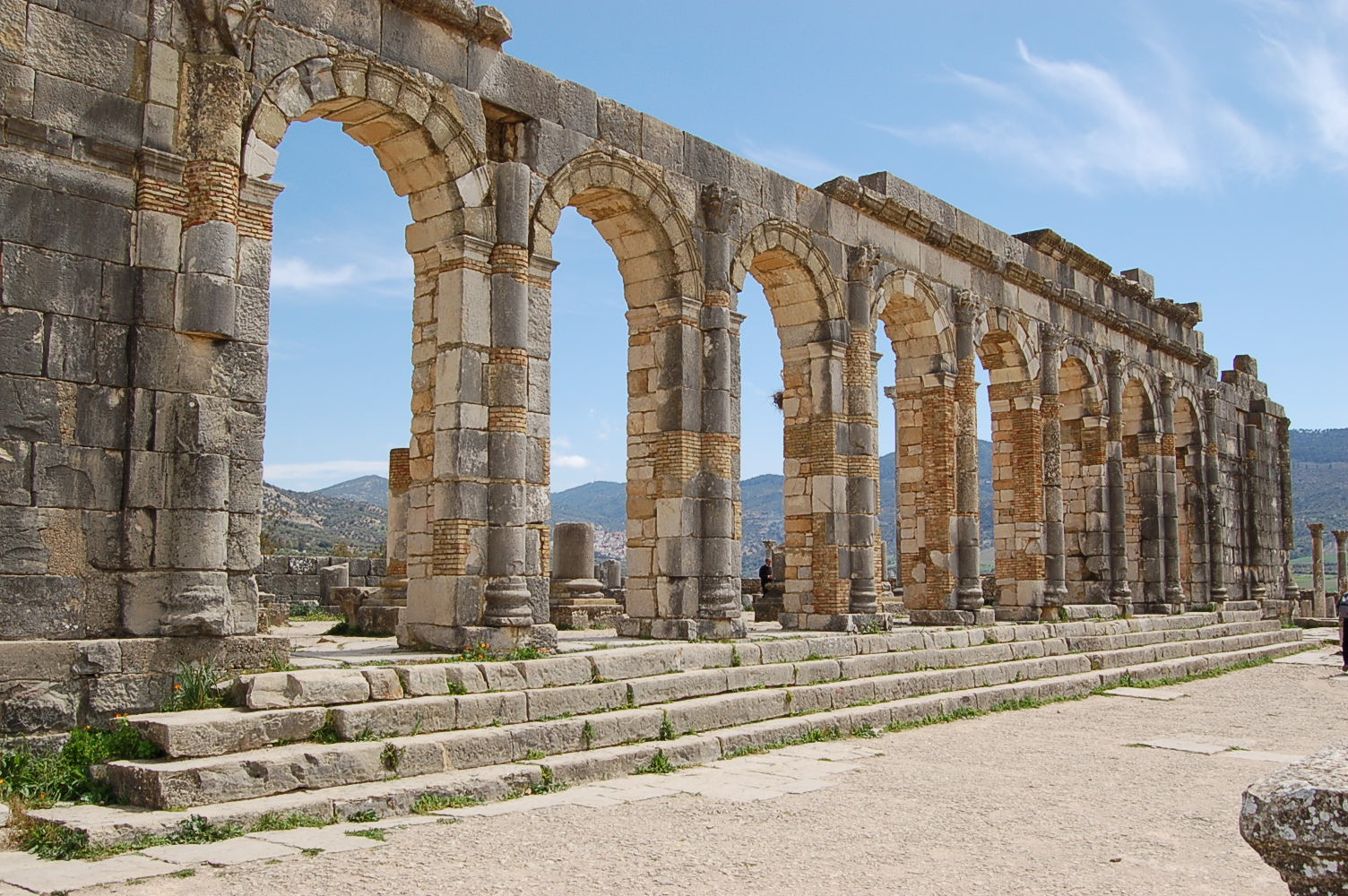
Archaeological Site of Volubilis (Inscribed in 1997)
Located near the imperial city of Meknes, Volubilis is one of the best-preserved Roman ruins in North Africa. This ancient city, founded in the 3rd century BCE, was once a thriving Roman provincial capital, and its ruins offer a glimpse into the grandeur of the Roman Empire’s influence in Morocco.
- Highlights:
-
- Triumphal Arch: The iconic monument that marks the entrance to the city.
- Basilica and Capitoline Temple: Impressive remains of Roman public buildings.
- Mosaics: Beautiful, well-preserved mosaics depicting Roman myths and everyday life.
-
- Travel Tip: Volubilis is best visited in the cooler hours of the morning or late afternoon, as there is little shade. Combine the trip with a visit to the nearby town of Moulay Idriss Zerhoun, one of Morocco’s most important pilgrimage sites.
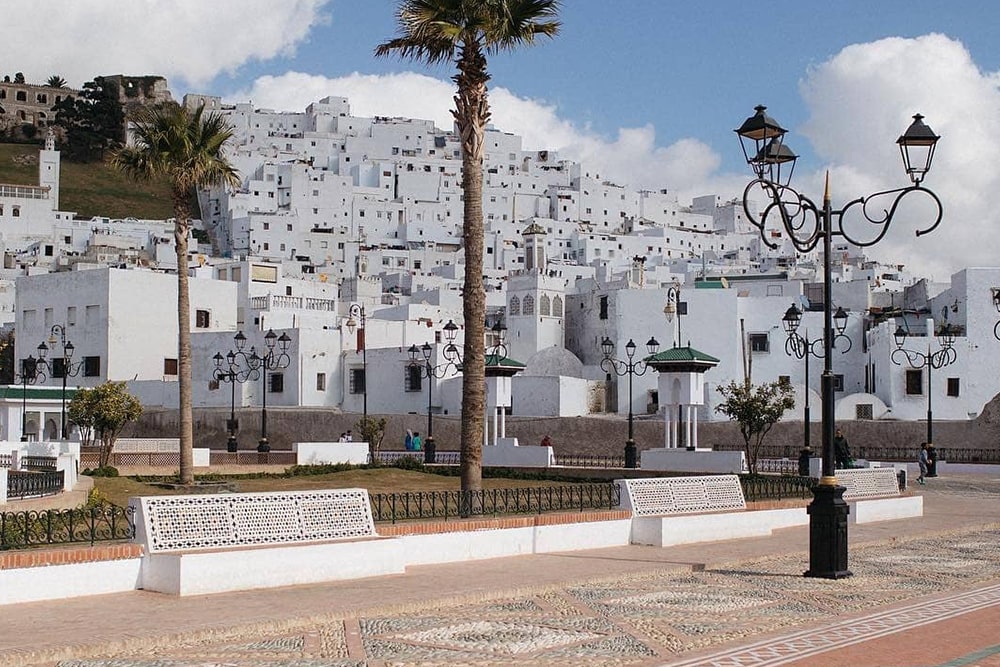
Medina of Tetouan (Inscribed in 1997)
Tetouan, nestled in the Rif Mountains, is known for its beautifully preserved Andalusian influence, dating back to the arrival of Muslim and Jewish refugees from Spain during the Reconquista. The medina of Tetouan is much smaller and less touristy compared to other Moroccan cities, making it a hidden gem for travelers seeking an authentic experience.
- Highlights:
-
- Andalusian Architecture: Admire the traditional whitewashed houses with intricate tilework and ornate doorways.
- Ethnographic Museum: Learn about Tetouan’s rich cultural history through its artifacts and exhibits.
- Artisanal Crafts: Tetouan is known for its crafts, especially its skilled artisans in pottery, embroidery, and leatherwork.
-
- Travel Tip: Tetouan is a quieter alternative to busier cities like Fez and Marrakech, making it a peaceful retreat in the north of Morocco.
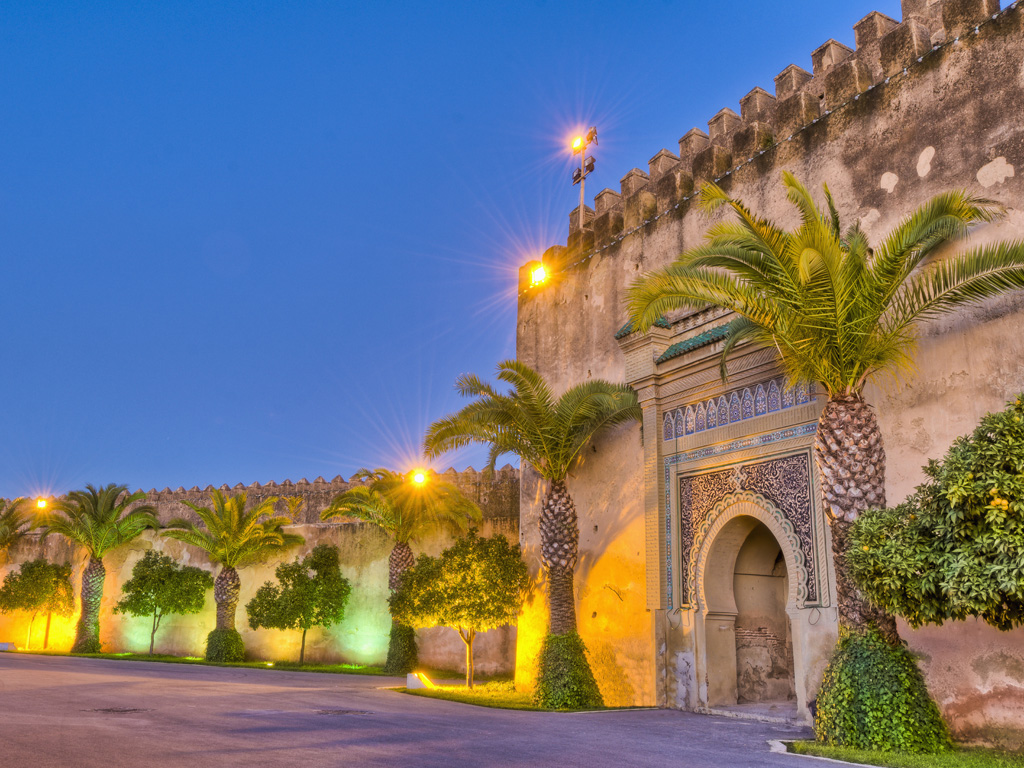
Historic City of Meknes (Inscribed in 1996)
Meknes, one of Morocco’s four imperial cities, was the capital under Sultan Moulay Ismail in the 17th century. It is known for its grandiose architecture and historical significance, with an array of palaces, mosques, and gates that reflect the city’s imperial past.
- Highlights:
-
- Bab Mansour: One of the most impressive and ornate gates in Morocco.
- Heri es-Souani Granaries: The vast royal granaries and stables built by Moulay Ismail.
- Royal Palace: Explore the remains of Moulay Ismail’s grand palace complex.
-
- Travel Tip: Meknes is often overshadowed by its larger neighbors, Fez and Marrakech, but it offers a more relaxed, less touristy experience with fewer crowds and stunning historical sites.
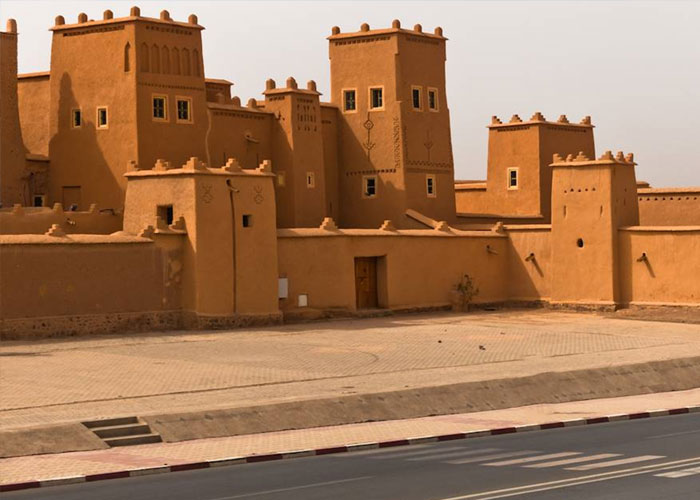
Ksar of Tifoultoute (Tentative)
Located near Ouarzazate, the Ksar of Tifoultoute is a historic fortress that dates back to the 18th century. While not yet inscribed as an official UNESCO site, it is on Morocco’s tentative list. Its traditional Kasbah architecture makes it an excellent example of southern Moroccan heritage.
- Highlights:
-
- Views over the Ouarzazate Plateau: The fortress provides spectacular views over the surrounding valleys.
- Traditional Architecture: Marvel at the intricate earthen architecture that typifies the kasbah style.
-
- Travel Tip: The Ksar is a convenient stop for travelers exploring the film studios and desert landscapes around Ouarzazate.
Morocco’s UNESCO World Heritage Sites offer travelers a chance to step into the country’s rich past, from the Roman ruins of Volubilis to the bustling medieval streets of Fez. These landmarks are more than just historical relics; they are vibrant, living parts of Morocco’s cultural fabric, where the past continues to shape the present. Whether you’re wandering the souks, exploring ancient kasbahs, or marveling at the artistry of Moroccan architecture, visiting these sites will undoubtedly deepen your appreciation of this diverse and enchanting country.
For a truly immersive experience, plan your itinerary to include a mix of these sites, taking time to soak in the unique atmosphere and history each has to offer.

Did you know Morocco is home to some of the world’s most fascinating UNESCO World Heritage Sites? From the maze-like medina of Fez to the timeless beauty of Ait Ben Haddou, every corner holds centuries of stories.
Yes! It’s incredible how much history and culture is packed into these places. Walking through the medina of Fez feels like stepping back in time, and Ait Ben Haddou is just breathtaking — like a movie set that’s completely real. Morocco’s heritage is truly one of a kind!
If you’re planning a trip to Morocco, don’t miss the archaeological marvel of Volubilis or the coastal charm of Essaouira’s medina. Pro tip: go early to beat the heat and enjoy the views without the crowds!
Great tips! Volubilis blew me away — the mosaics are so well preserved, and the setting is stunning. And Essaouira’s medina has such a relaxed, breezy vibe compared to the bigger cities. Going early really does make a difference, especially if you love taking photos without the crowds!
Every stone in Volubilis tells a Roman story. Every mosaic whispers of gods and daily life. Visiting these ruins isn’t just sightseeing—it’s stepping into a chapter of Morocco’s long and layered history.
Beautifully said. Volubilis truly feels alive with history — it’s like the past is still echoing through the columns and archways. Standing among those ruins, you can almost imagine the lives once lived there. It’s a powerful reminder of Morocco’s incredible cultural depth
Building your Morocco itinerary? Don’t just stick to the famous cities—include gems like Meknes and Tetouan for a deeper, more authentic experience. Fewer tourists, more culture!
Absolutely agree! Meknes has such an underrated charm — the royal gates, the quiet medina, and that sense of untouched history. And Tetouan? Pure Andalusian influence with a calm, authentic vibe. Exploring beyond the usual stops really gives you a fuller picture of Morocco.
From the intricate stucco of Bou Inania Madrasa to the Andalusian tiles of Tetouan, Moroccan UNESCO sites are a celebration of art and craftsmanship. Take time to admire the details—they tell the story better than words ever could
So true — the craftsmanship in places like Bou Inania Madrasa is absolutely breathtaking. Every tile, carving, and arch feels like a love letter to Morocco’s artistic heritage. It’s amazing how much history and meaning are captured in the tiniest details